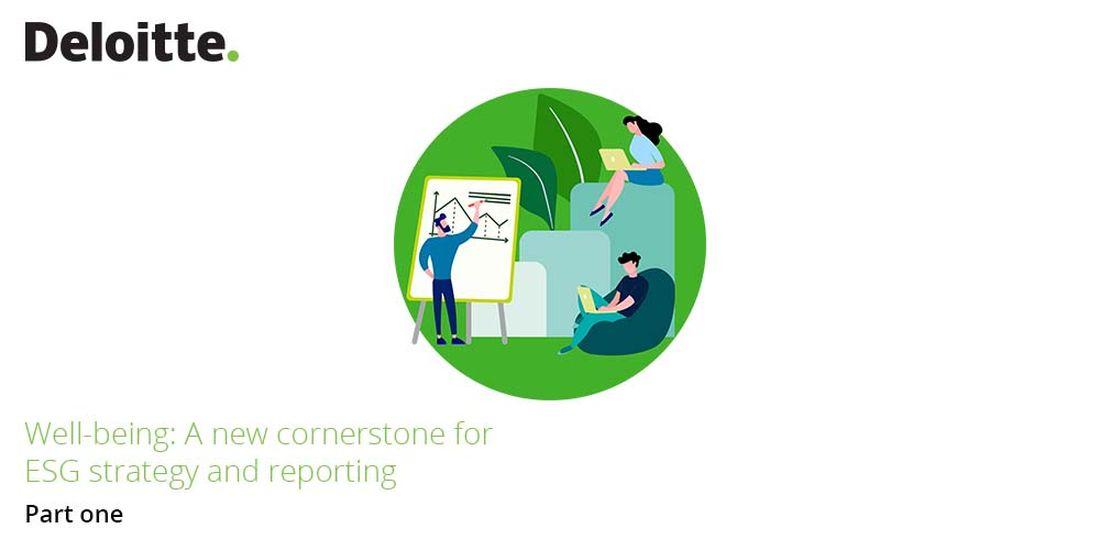New White Paper Offers Actionable Insights on Workplace Well-being

A new white paper published by Deloitte offers new insights on how the evolution of well-being in the workplace is pushing employers to take an integrated approach to establishing a culture that not only takes physical hazardous elements out of workplace, but also addresses and helps support employees’ overall physical and mental well-being.
Employers: It IS your job to make sure your employees feel good. And there are tools to help you out.
This is the conclusion by a new white paper published by Deloitte, Well-being: A new cornerstone for ESG strategy and reporting (part 1).
The paper offers new insights on how the evolution of well-being in the workplace is pushing employers to take an integrated approach to establishing a culture that not only takes physical hazardous elements out of workplace, but also addresses and helps support employees’ overall physical and mental well-being.
The paper expands on Deloitte’s consulting model on future of work and explores well-being against the backdrop of an Environmental, Social and Governance (ESG) framework. In particular, work, the workforce and workplace are considered through the lens of corporate environmental and societal factors. These are the three pillars on which employers can build and support a culture of well-being at the organization level.
Lisa MacVicar, principal author of the white paper and a senior manager of the Real Estate Advisory at Deloitte Canada, cited peer-reviewed studies stating that businesses with good employee well-being programs have been shown to significantly outperform companies listed on the S&P Index. For example, portfolios composed of companies that scored highly in the Corporate Health Achievement Awards, which recognize North American companies, appreciated by 204% to 333% compared to the S&P 500 index appreciation of 105%.
MacVicar points out that it is no longer just the human resource department’s job to safeguard employee well-being. Recognizing that a healthy, engaged workforce can positively impact a company’s bottom line, corporate leaders are beginning to make long-term commitments to well-being strategies. She writes, “C-suite leaders, board members, and executive teams play a critical role in driving policies, procedures and practices that promote well-being, changes that can positively influence workplace culture, management practices and employee experience”.
Subject matter experts at the International WELL Building Institute contributed to the whitepaper including works by Dr. Whitney Austin Gray, Senior Vice President, Research; Minjia Yang, Vice President, Investing for Health; and Dr. Matthew Trowbridge, Chief Medical Officer.
The paper hopes to serve as a playbook for organizational decision makers with its actionable roadmap on how to deploy various elements around the three well-being pillars. In addition to supporting the workforce (the people), an organization needs to leverage the other two related pillars: work and workplace. An organization should integrate well-being into the design of work, for example, allowing flexible scheduling and adopting systems for collecting and communicating feedback. As to the workplace pillar, leading organizations are using the physical workplace as a lever for well-being, providing access to physical spaces and remote work policies designed with people’s health and productivity at the center.
Part 1 of the paper hits on several thought-provoking areas to highlight:
- The evolution of well-being in the workplace – an analytical review of how the focus of well-being has advanced from the 19th century’s physical hazards prevention to today’s more progressive ban on psychosocial hazards by the United States OSHA regulation to the International Labor Organization’s all-inclusive well-being aspects of working life.
- The impact of ESG on employee well-being – a deep dive on how the demand on responsible investment puts a spotlight on corporate ESG practices which can result in more positive impact on employee well-being.
- Well-being: a changing regulatory environment – a section on how the regulatory environment is putting pressure on organizations to adopt, track, measure and report on ESG practices. This section also notes well cited research regarding the strong correlations between good employee well-being programs and companies’ corresponding high financial performances.
- Using the physical workplace as a lever for well-being – an insight on how buildings should no longer be overlooked as a lever that can deliver, measure and provide reporting opportunities on well-being outcomes both as we fight our way out of the current pandemic and into the future.
- Moving the well-being agenda forward – a call to action for human resources, information technology, sustainability, risk and real estate functions to come together and develop an integrated approach to well-being.
- Creating a culture of well-being through work, the workforce, and the workplace – laying out the three pillars for well-being strategies and offering a toolbox to help frame out integrated well-being parameters.
Part 2 of the whitepaper, scheduled to release later this year, will take a closer look at identifying metric competency and leading indicators as well as necessary tools for leaders to institute a plan to implement well-being strategies.
View the original content here.

